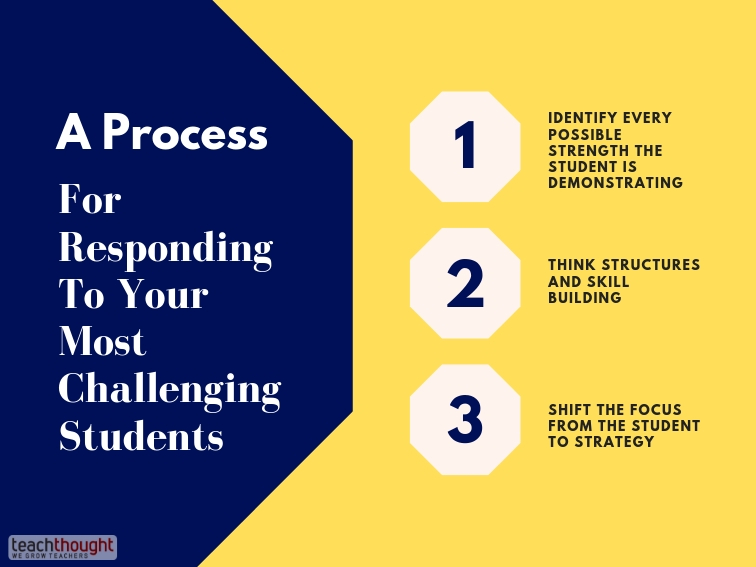
How Can You Respond To Your Most Challenging Students?
contributed by Jeffrey Benson
‘Hanging In’ is about making a difference in the lives of significantly challenging special needs students. A number of mainstream teachers, who find themselves with a challenging student, have told me that their supervisor gave them Hanging In and then walked away as if the responsibility of such arduous work was solely for that single teacher. In many cases, the supervisor hadn’t even read the book!
Hanging in with a challenging student can positively transform a team of teachers. Hanging in as a team can expand a school’s capacity to work with the next challenging student. Hanging in as a team can promote compassion, intellectual leaps, and connect us to the deepest reasons we chose to become teachers. There are a number of ways teams can do this work well, and avoid the traps of blaming, shame, frustration, and silence. Here are three key steps to take:
Step 1: Identify every possible strength the student is demonstrating
Recently I was asked to help a school with a very challenging student; I was sent descriptions of all the difficulties he was presenting—and so I was rendered completely unable to offer any ideas because I did not know what he could do. When we talk about a student as if he is a sack of disabilities and problems, we disable ourselves. We can only teach people through their strengths, by starting with what the students can do now and building upon that foundation—and if it’s not a foundation, find the scattered bricks and start putting them together.
Of course, we have to discuss the problems, and it is very important to be able to safely vent: I worked with an amazing teacher who walked into my office, closed the door and said, “I feel like throwing Edgar out the window!” and before I could organize my thoughts into any sort of worthwhile response, she said, “Okay, I just had to say that. Now let’s figure out how to help him.” It is likely all members of the team can identify the presenting problems, so focus abundantly on strengths for a much longer period of time than you spend cataloging the challenges.
The students’ strengths–and your trust–are two tools that can help you form a relationship when working with challenging students.
Step 2: Think structures and skill-building
Students don’t change overnight, they grow.
They grow from exposure, trial and error, feedback, and opportunities to be exposed again to the same stimulus. Along that uneven and unpredictable path, they will be challenging. The best way for the team to hang in as the student learns new skills is to alter structures that make the situation even harder to manage. The team may want Miles to be less distracted during transitions, and this is going to take time. He will not be the best behaved student during transitions right away.
The team may identify a set of skills for Miles to learn, such as focusing on his breathing and putting his fingers in his ears to decrease distracting sounds. Until he masters those skills transitions will be hard, so what structures are malleable? Perhaps his desk can be shifted. Perhaps the class can line up on the other side of the room. Perhaps he can be given a job to do before or during the transition.
Schools are filled with rituals and structures that can be adapted, saving students and teachers from stress. Don’t get snagged on the student’s weakness that isn’t going to change soon—bulk up on structural fixes.
Step 3: Shift the focus from the student to strategy
I worked at a school that had a unique protocol for discussing a challenging student.
The challenge, we realized, was that we did not know what to do—the student was just being herself. So the team tried something very different: we could not talk about the student until we talked about ourselves! Before that, I would say to the group, “I had Anita in class this morning and she was in tears about her mother,” which would often prompt others to say, “Oh, yes her mother was….” Or “I had Anita also this morning and she was….”
Instead, I had to say, “I had a student in class who was in tears and I did not know how to help her refocus on her quiz.” This would lead to very productive discussions about how we manage that situation, one that is certainly not unique to Anita, and one that in some fashion I will confront again. This unusual protocol gave us permission to safely talk about the aspects of our practice that we wanted to improve, and led us to do research and develop trainings.
I know of few better feelings than being part of a team that identifies its challenges, speaks honestly and professionally about its practices, and compassionately helps the neediest members of the community to hang in and grow.
Jeffrey Benson has worked in almost every school context in his 35 years as an educator, from elementary school through graduate programs. Benson’s book, Hanging In: Strategies for Teaching the Students Who Challenge Us Most (ASCD, 2014), shows educators the value of tenacity and building connections when teaching the students who most need our help. Connect with him on Twitter at @JeffreyBenson61; A Process For Responding To Your Most Challenging Students; image attribution Flickr user usdeptofeducation
